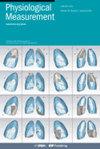Assessment of the relational strength between triggers detected in physiological signals and the occurrence of atrial fibrillation episodes.
IF 2.3
4区 医学
Q3 BIOPHYSICS
引用次数: 0
Abstract
Despite the growing interest in understanding the role of triggers in paroxysmal atrial fibrillation (AF), solutions beyond questionnaires to identify a broader range of triggers remain lacking. This study aims to investigate the relation between triggers detected in wearable-based physiological signals and the occurrence of AF episodes. Methods: Week-long physiological signals were collected during everyday activities from 35 patients with paroxysmal AF, employing an ECG patch attached to the chest and a photoplethysmogram (PPG)-based wrist-worn device. The signals acquired by the patch were used for detecting triggers of physical exertion, psychophysiological stress, lying on the left side, and sleep disturbances, as well as to annotate AF episodes. To assess the relation between detected triggers and the occurrence of AF episodes, a measure of relational strength is employed accounting for pre- and post-trigger AF burden. The utility of ECG- and PPG-based AF detectors in determining AF burden and assessing the relational strength is also analyzed. Results: Physical exertion emerged as the trigger associated with the largest increase in relational strength for the largest number of patients (p< 0.01). On the other hand, no significant difference was observed for psychophysiological stress and sleep disorders. When AF episodes are captured using AF detectors, the relational strength exhibits a moderate correlation with the relational strength of the annotated AF, withr= 0.66 for ECG-based AF detection andr= 0.62 for PPG-based AF detection. Conclusions: The findings indicate a patient-specific increase in relational strength for all four types of triggers. Significance: The proposed approach has the potential to facilitate the implementation of longitudinal studies and can serve as a less biased alternative to questionnaire-based AF trigger detection.评估生理信号中检测到的触发因素与心房颤动发作之间的关系强度。
尽管人们越来越关注了解触发因素在阵发性心房颤动(房颤)中的作用,但除了问卷调查之外,仍然缺乏识别更广泛触发因素的解决方案。本研究旨在调查从可穿戴生理信号中检测到的触发因素与房颤发作之间的关系:使用贴在胸部的心电图贴片和基于光电搏动图(PPG)的腕戴式装置,收集了35名阵发性房颤患者在日常活动中长达一周的生理信号。贴片获取的信号用于检测体力消耗、心理生理压力、左侧卧位和睡眠障碍等触发因素,以及房颤发作的注释。为了评估检测到的触发因素与房颤发作之间的关系,采用了一种关系强度测量方法,考虑触发前和触发后的房颤负担。此外,还分析了基于心电图和 PPG 的房颤检测器在确定房颤负荷和评估关系强度方面的效用:体力消耗是最多患者关系强度增加最大的触发因素(p< 0.01)。另一方面,心理生理压力和睡眠障碍则没有明显差异。使用房颤检测器捕获房颤发作时,关系强度与注释房颤的关系强度呈中等相关性,基于心电图的房颤检测的关系强度为 0.66,基于 PPG 的房颤检测的关系强度为 0.62:研究结果表明,所有四种类型触发器的关系强度都会因患者而异地增加:建议的方法有可能促进纵向研究的实施,并可作为基于问卷的房颤触发检测的一种偏差较小的替代方法。
本文章由计算机程序翻译,如有差异,请以英文原文为准。
求助全文
约1分钟内获得全文
求助全文
来源期刊

Physiological measurement
生物-工程:生物医学
CiteScore
5.50
自引率
9.40%
发文量
124
审稿时长
3 months
期刊介绍:
Physiological Measurement publishes papers about the quantitative assessment and visualization of physiological function in clinical research and practice, with an emphasis on the development of new methods of measurement and their validation.
Papers are published on topics including:
applied physiology in illness and health
electrical bioimpedance, optical and acoustic measurement techniques
advanced methods of time series and other data analysis
biomedical and clinical engineering
in-patient and ambulatory monitoring
point-of-care technologies
novel clinical measurements of cardiovascular, neurological, and musculoskeletal systems.
measurements in molecular, cellular and organ physiology and electrophysiology
physiological modeling and simulation
novel biomedical sensors, instruments, devices and systems
measurement standards and guidelines.
 求助内容:
求助内容: 应助结果提醒方式:
应助结果提醒方式:


